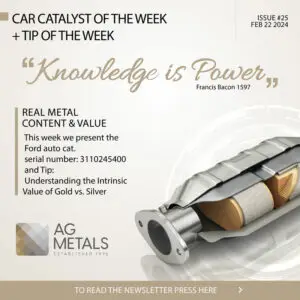Evaluating PGM Content, and Estimating the “Money Value” of Auto Catalytic Converter
This article is a step-by-step guide for how to evaluate an auto catalytic converter. We took Mercedes diesel-catalytic converter / serial # KT1310
In order to demonstrate the test process. Please follow the steps below:
1.Look for the Auto catalytic converter serial number, so you can retrieve the data for future use. As you can see, in this case the serial # is KT1310.

2.Take off the Catalyst shield cover (is not present not on all catalysts).
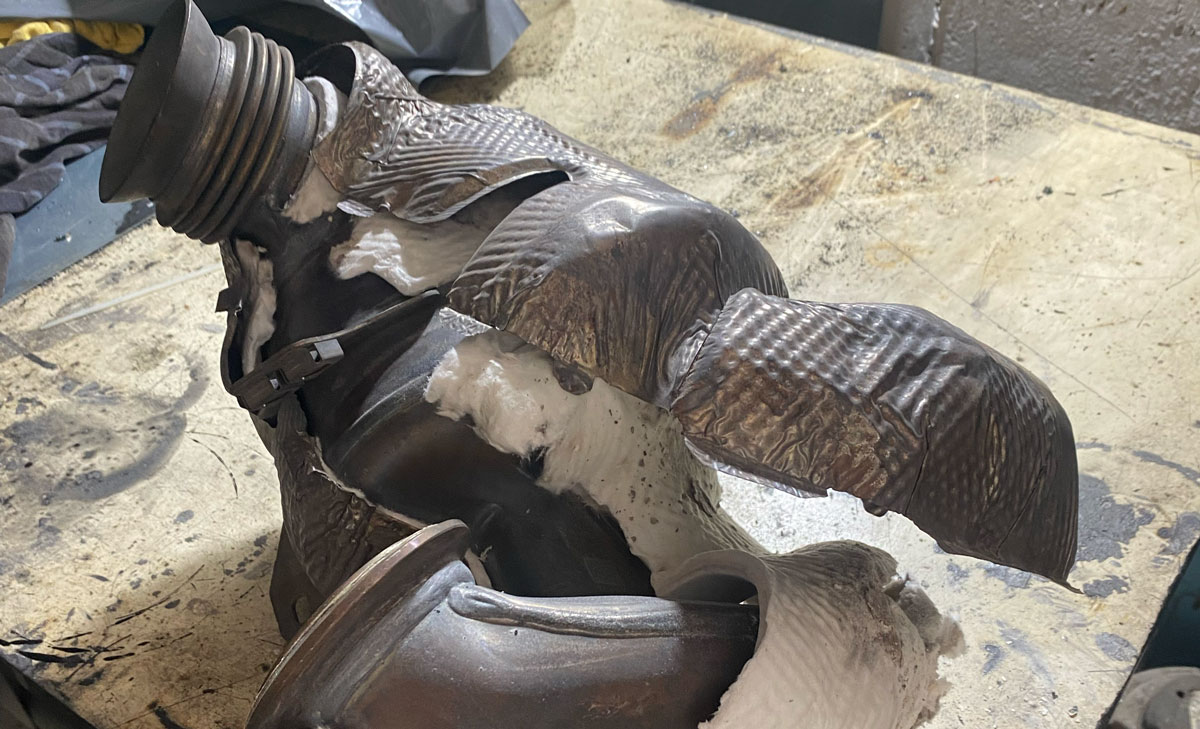
3.Use a disc saw to carefully cut the metal container (use protective glasses and gloves). Cut it as shown.

4.Carefully remove the monolith and weigh it as one unit. In our example, the weight is 1,280 gram.
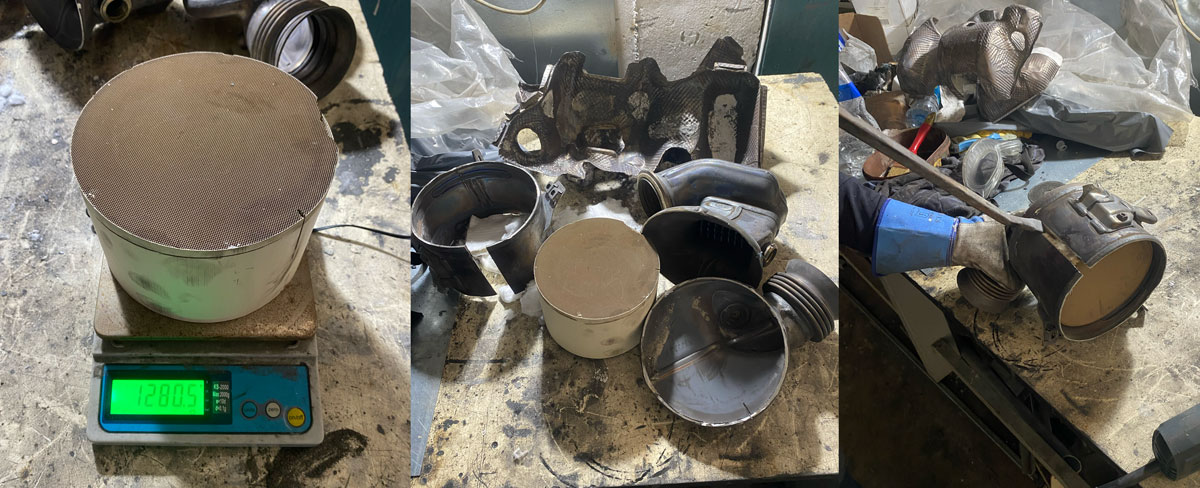
5.Break the monolith and shred it into powder.
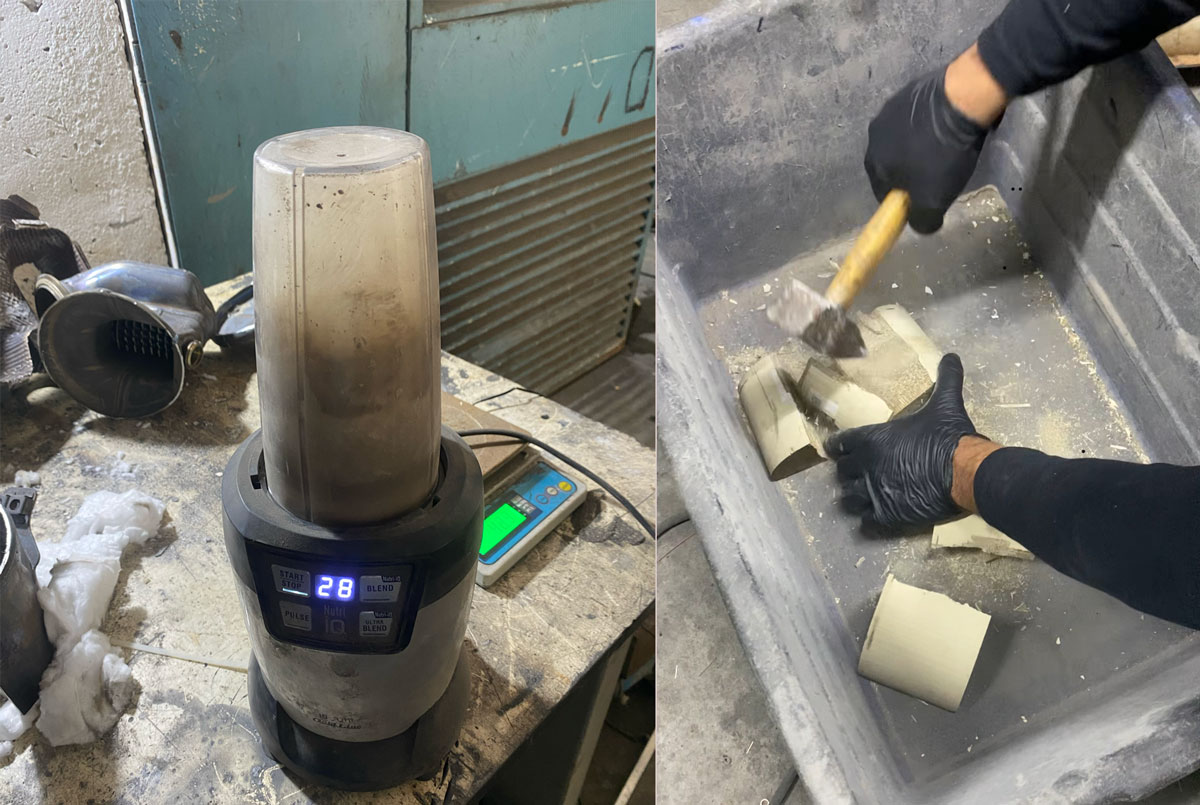
5.Grate the powder into fine powder. The recommended particle size is < 150 micron.
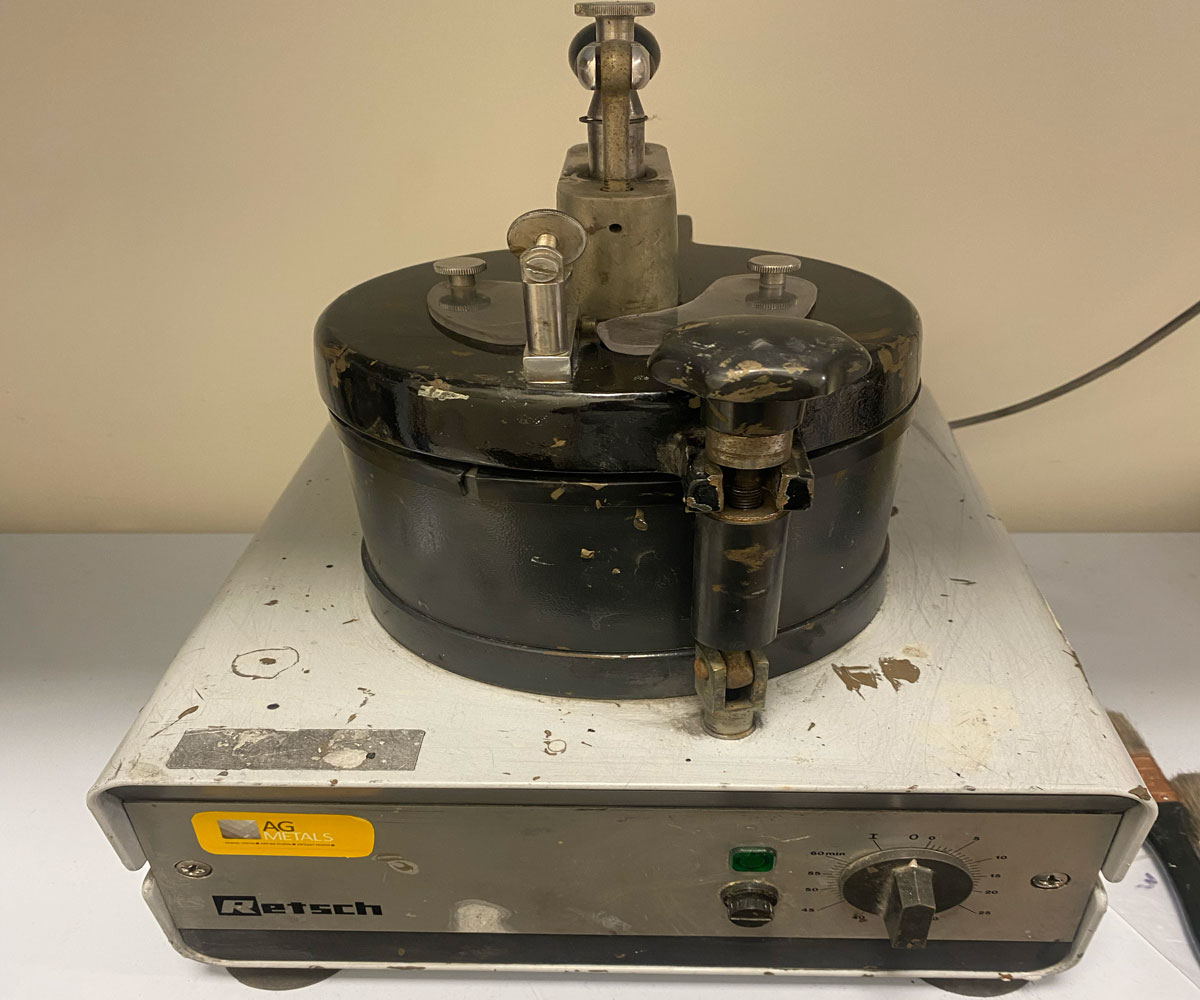
6.Dry the powder to avoid humidity, which may affect assay accuracy.
Take a sample of the “fine powder” and assay it by XRF. Use the special mode for Auto Catalytic Converters.

Now, once we have all the parameters, we can calculate the value.
Calculation for Auto Catalyst serial # KT1310
Monolith weight – 1,280 g. (1.28 Kg)
Palladium content – 1062 ppm (1.062 g./Kg)
Platinum content – 5067 ppm (5.087 g./Kg)
Rhodium content – – 0 –
Pd price – 30 $/gr. (price changes daily)
Pt price – 30 $/gr. (price changes daily)
Pd value – 1,280 x 1,062 x 30 = $40.7
Pt value – 1,280 x 5,067 x 30 = $194.5
Total – $235.2
Note:This is the theoretical PGM metals value in an Auto catalyst. Actual value should be lower due to refining cost and dealer margin.


